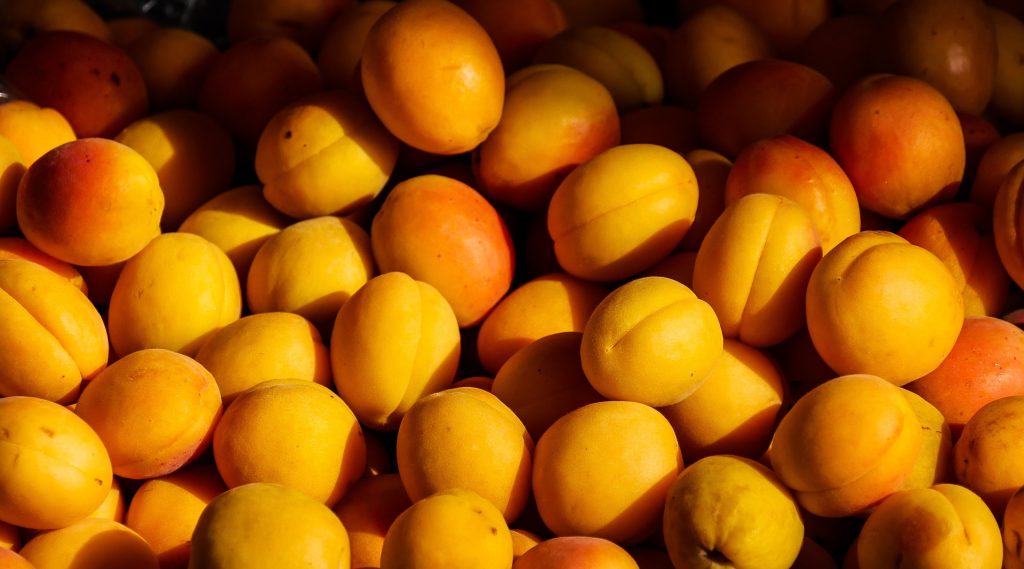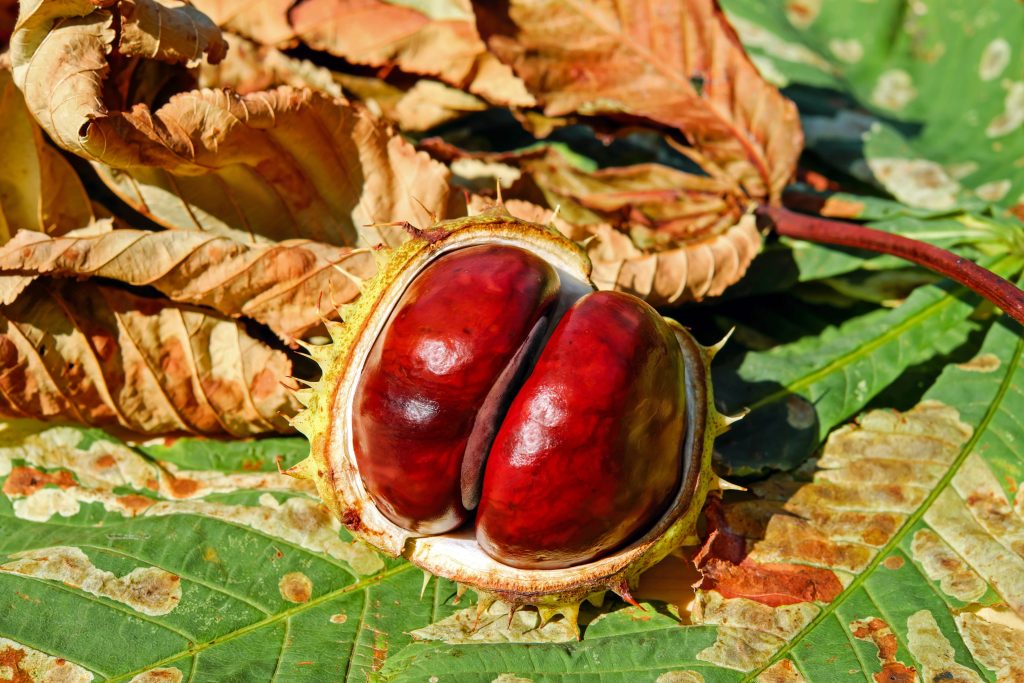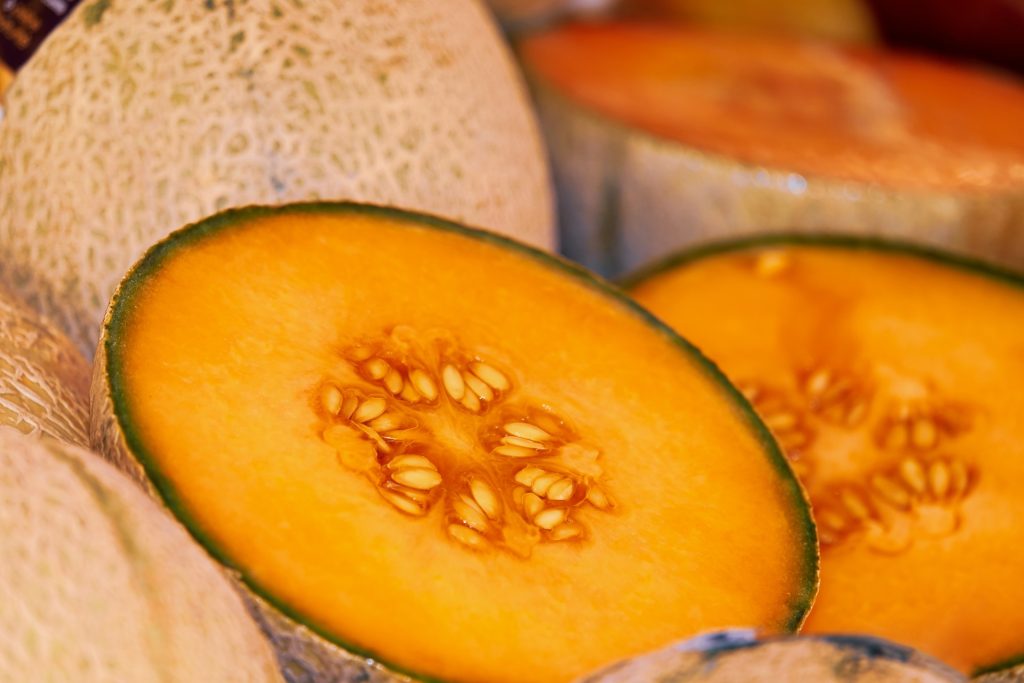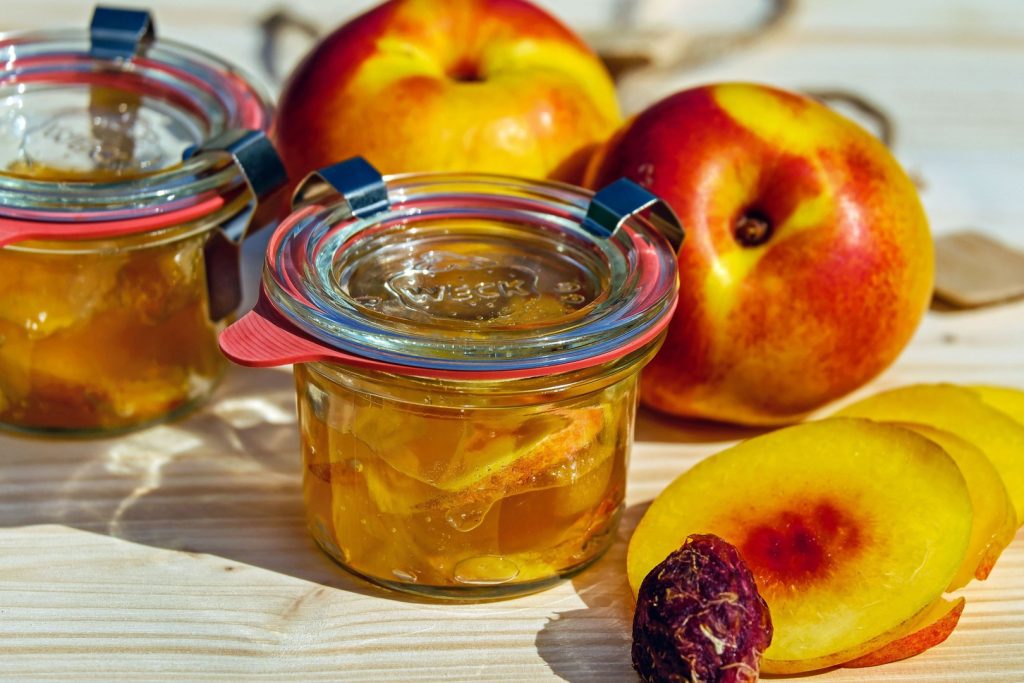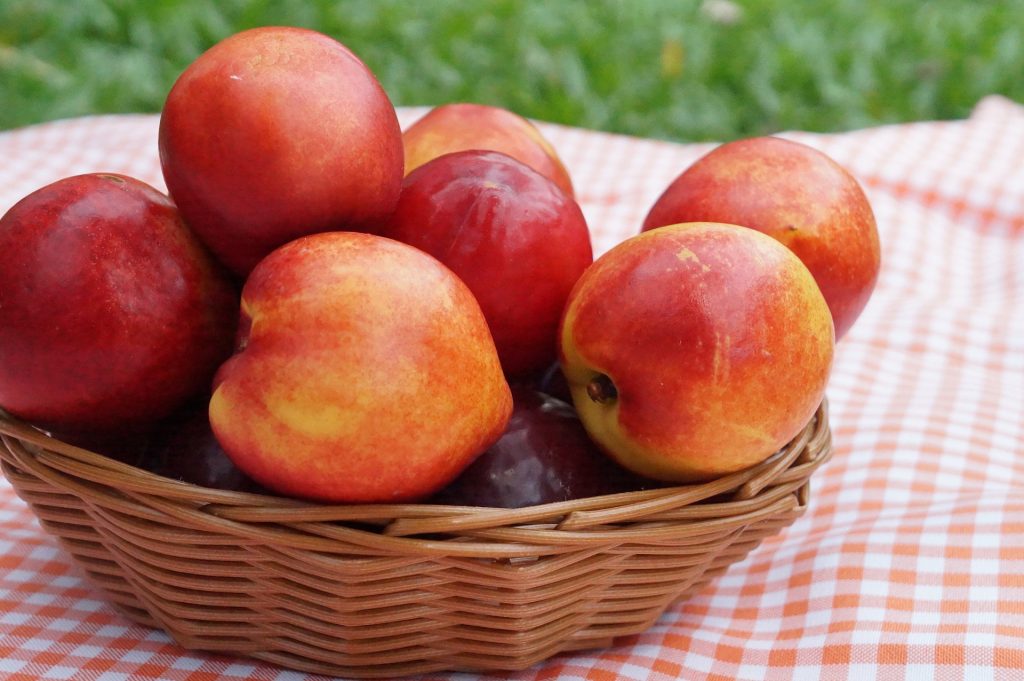Blog
Find articles that matter. From trading to shipping, trends to valuable goods, you can deep dive into everything you need.
Latest Posts
Blog
The People's Republic of China is one of the countries in international relations that is referred to as the global power. Because China has a powerful economy, political force, and army. Located in far East Asia, China has commercial and political partnerships with almost every country around the world. China is known for its investments in foreign countries and fast-growing economy with its export of Chinese-origin products.
China-Turkey relations have been developing rapidly in different aspects since the 1970s. 'Friendship-based' diplomatic and economic relations between the two countries progress. In particular, high-level protocols and strategic partnership agreements between the two countries in recent years strengthen the relations. Strengthening and developing economic relations with global trade partner China is very important for Turkey. Also, Turkey is aware of this importance and follows policies with a multilateral economic partner model. This policy aimed at enhancing cooperation is the Asia Anew Initiative. The main aim of the Asia Anew Initiative is to develop economic cooperation, increase mutual investments and strengthen trade relations with Asian countries.
Let's examine in more detail which areas the Turkish-Chinese economic relations have developed. In addition, we will look into the importance of trade relations between the two countries.
Trade Relations Between China and Turkey
Turkey-China relations are progressing within the framework of strong relations dating back a long time. The most important pillar of the strong relations between the two countries is undoubtedly economic relations. China is one of the countries with the strongest economy in the world in the Asia Pacific region. Turkey is the country that imports the most from China today. Therefore, Turkey is one of the most important and largest trade partners of China.
According to the data shared by the Ministry of Foreign Affairs, China is Turkey's second-largest trading partner. Also, the trade volume between the two countries in 2021 is 35.9 billion dollars. The main products exported by Turkey are natural borate ores, marble, travertine, iron, chromium, other precious metal ores lead, zinc, copper, boron oxides, and boric acids.
Among the products Turkey imports from China are tools for receiving, converting, and transmitting audio-video. Additionally, there are other tools such as compressors, telephones for cellular/other, wireless networks, automatic data processing machines and units, and converters.
In recent years, an increase has been observed in the export rate of agricultural and livestock products to China. China demands cherries, grains, flour, starch, and pistachios the most. According to the data shared in 2022, white meat exports to China increased by 353% in the last 12 months. It reached a value of 61 million dollars. In addition, there is a notable increase in the export of dairy and water products to China.
Commercial Investments Between Turkey and China
The total trade volume between the two countries in the last five years has reached 100 billion dollars. Again in the last five years, the rate of investments from China to Turkey has increased by 120%. China's total investment in Turkey is approximately four billion dollars. Among the sectors of investments made are telecommunication, livestock, finance, energy, infrastructure, and mining. Marmaray, Eurasia Tunnel, Istanbul Airport, Çanakkale 1915 Bridge, and Yavuz Sultan Selim Bridge are investments made by China in Turkey's transportation infrastructure.
Today, more than 1000 Chinese companies operate in Turkey. The Bank of China and ICBC Turkey are among the leading investors in the banking and finance sector. Also, Chinese smartphone manufacturer companies such as Xiaomi, Oppo, and Vivo are among the important companies that invest in Turkey.
The Importance of Belt and Road Initiative
Turkey supports the Belt and Road Initiative, one of China's most comprehensive global initiatives. One of the reasons why Turkey supports this investment is Turkey's strategic location and its proximity to energy resources. China, on the other hand, being aware of Turkey's strategic importance, sees Turkey as a gateway to the Middle East, and North and Central Africa. Therefore, the Belt and Road Initiative is an important investment that will support the strengthening of bilateral trade relations between Turkey and China. Turkey has been working with China on the Belt and Road project for five years.
In 2015, bilateral agreements were signed between the two countries in order to harmonize the "Middle Corridor" project put forward by Turkey and the Belt and Road initiative. White goods were exported to China in 2020 from the Baku-Tbilisi-Kars railway, which is of critical importance for the Middle Corridor Project.
Another Important Trade Relations Between Two Countries
In many sector groups, the commercial and economic relations between the two countries continue to strengthen yearly. In 2019, a bilateral currency swap agreement was signed between the CBRT and the Central Bank of the People's Republic of China. The purpose of the swap agreement is to facilitate trade between the two countries in local currencies.
Relations between the two countries continue to progress positively in the tourism sector. The goal is to increase the number of Chinese tourists coming to Turkey from China to one million. Yearly increasing tourism enables the Turkish and Chinese peoples to get to know each other's culture, language, history, and values better.
2018 was declared Turkey Tourism Year in China. There was a recession in the tourism sector in 2020 and 2021 due to Covid-19. However, serious increases are expected in the number of tourists with the slowdown of the pandemic. In addition, in the health sector, especially during the Covid-19 period, vaccines and health equipment were provided from China to Turkey.
Finally, Turkey and China are two important trade partners that have maintained their political and economic relations for over 50 years. Trade agreements, economic investments, and cooperation in many sectors between the two countries are very important for the economies of both countries.
There are many alternative transportation options when trading goods, products, or commodities from one country to another. One of the most widely used transportation methods to provide logistics in trade is sea transportation. Short sea shipping (SSS) is a type of transportation preferred by the European Union, especially in recent years. Let's dive into what short sea shipping is and the advantages it provides.
What is Short Sea Shipping?
Short sea shipping is defined as goods that do not cross the ocean while being traded from one country to another. In short sea shipping, there is no specific limit of transit time or nautical miles traveled by ship. This type of transportation has a short transit time compared to other types of sea transportation. Additionally, short sea shipping is generally less costly and is a slower mode of transportation. In this respect, it has similar characteristics to road transport.
Economic and environmental factors are among the most important reasons for preferring short sea shipping. This type of transport is seen as an alternative to rail and road transport. Short sea shipping is the use of coastal and inland waterways to transport goods to ports without crossing oceans or deep waters. In other words, short sea shipping is the movement of goods along the coast without crossing the seas.
Although short sea transportation has become much more preferred in recent years, this type of transportation has been used for centuries. This shipping type began to be used in Europe. Also, short sea shipping is generally preferred by scale economies. Nowadays, short sea shipping accounts for about 40% of world trade. In particular, short sea shipping is often preferred in trade from the Mediterranean, Baltic, and Black Seas.
Advantages of Short Sea Shipping
Today, the reason for the preference and development of short sea transportation, especially by the European Union member states, is undoubtedly the benefits provided by this shipping method. In this section, the benefits of short sea shipping will be examined.
Provides Energy Efficiency
The transportation industry uses significant energy consumption worldwide. Due to environmental concerns, it is important to consume as little energy as possible. Short sea shipping is one of the most energy-efficient types of transport. It is possible to save fuel thanks to SSS.
Eco-Friendly Shipping Way
One of the most important and notable benefits of short sea shipping is that it's eco-friendly. The EU gives priority to short sea shipping. Because the EU attaches importance to climate change and environmental problems. The EU sets targets for the elimination of environmental problems almost every year. One of these targets is to reduce greenhouse gas emissions from transportation by 60% by 2050. In addition, by 2030, 30% of road freight transport will be changed to other modes of transport. At this point, short sea shipping is very important in terms of realizing the targets of EU member states.
In particular, short sea shipping is an important alternative to road transport, as it is an eco-friendly and greener mode of transport. Short sea shipping contains much fewer carbon emissions per tonne. It is important that short-distance transport is widely adopted around the world. Because short sea shipping contributes to the reduction of carbon footprint and the achievement of sustainable development goals determined by the United Nations.
Road Safety Shipping
Short sea shipping allows countries to carry out ocean transport more reliably. Also, short sea shipping is much safer compared to other types of transportation. For example, with SSS, there are no problems such as driver problems, traffic accidents, delays caused by traffic, and capacity problems. Short sea shipping ensures a safe end-to-end logistics process.
Time-Saving
One of the most important advantages of short sea transportation is that it saves time. Thanks to the SSS, the goods or products are delivered to the location in a timely and consistent manner. In this type of transportation, delays are not experienced as much as in road transportation. The SSS provides timely departures and arrivals. In this way, suppliers do not have to deal with inventory problems or keep stock in the warehouse.
Cost Savings
An important factor in preferring short sea shipping is that it is cost-saving. SSS is much less costly than road and air transport. The capital costs required for the infrastructure of the SSS are much lower compared to the infrastructure expenditures of the highway. In addition, with SSS, much more bulky, numerous, and heavy goods can be transported. A ship alone can carry goods with a capacity of about 500 trucks so it is possible to save on costs.
Development of Short Sea Shipping in Turkey
Turkey is a country surrounded by seas on three sides and located at the intersection of Asia and Europe, which is a strategically very important transit point. For these reasons, Turkey has an important position in international sea transport.
Turkey is surrounded by the Black Sea, the Sea of Marmara, the Aegean Sea, and the Mediterranean, and has the longest coastline at 8,333 kilometers. Recently, work has been carried out to develop international sea trade and especially short sea shipping in Turkey. In this context, it is aimed to make new investments in ports and expand existing port capacities. Thanks to the advantages it provides, short sea shipping can support sustainable economic growth and increase export rates in Turkey.
Turkish Goods Provides Safety Shipping
Turkish Goods' partner brand Trem Chart is with you every moment of your logistics process with quality service. Trem Chart offers multimodal transport services for marine and dry bulk transportation that are suitable for each tonnage volume. It provides high standards and proactive and fast solutions to its customers by prioritizing safety in the transportation services it offers.
Trem Chart has a wide range of services. It is at your side with its expert team in every matter you need, such as technical assistance, logistics, and financial and legal consultancy. By importing via Turkish Goods, you will benefit from high-quality logistics services.
Importing goods can be a complicated and daunting task for many. After all, the process involves many different steps, risks, laws, and regulations to consider. While choosing the products to import and choosing the right suppliers are quite important, choosing the right payment option is also crucial for a safe and risk-free process.
There will always be risks since there are many variables to consider. However, it is in your hands to minimize these risks as much as possible. One of the important ways of minimizing risks is choosing a safe payment method. Importing a product from a different country requires you to be more thoughtful about the payment. It is not as simple as buying a product online. You need to consider the loading of the goods, the shipment process, possible damages that can occur and other problems that may arise during the process.
Choosing the right payment option allows you to be safe in the face of possible problems. Certain payment options will protect you from financial losses. Therefore, you need to take the time to choose the perfect payment option for your situation. We have prepared this guide to help you make safe international payments for your imports. Let us take a deeper look into the payment options you can consider.
Risks to Consider Before Deciding on the Payment Method
There are certain risks involved that you need to be aware of and consider before making a final decision as to the payment method. The risks involved in the process will allow you to understand the losses you might experience and take precautions accordingly. We can examine the risks under three main headings: financial, commercial and political risks.
- Financial risks: During the transfer of money, you may come across problems. Since most transactions are done in foreign currencies, there is always a possibility of the bank not having enough foreign currency to make the payment. This problem might occur in third-world countries. The payment can only be done once they have enough foreign currency which means the payment might be delayed.
- Commercial risks: Trade is a mutual transaction. Therefore, importers run the risk of not receiving the products despite making the payment. On the other hand, they might receive faulty or damaged products. Similarly, the exporters run the risk of not being paid despite shipping the products to the buyer.
- Political risks: The political stability of the country you will be importing from is quite important. Any uprising, instability, or -the worst case scenario- war can make any trade relations impossible. Due to such political events, you might suffer financial losses.
Choosing the Safest Payment Options
After acknowledging the risks that are involved in the import process, you can start thinking about payment options. While each payment method has its advantages and disadvantages, it is better to choose one based on your situation. To help you choose the safest international payment option, we have listed the most frequently used methods in international trade. These payment methods are considered to be the safest for an importer. Read on to decide which one fits you the best.
Letter of Credit
Letter of Credit, also known as LC, is considered to be the safest payment option. This is because the Letter of Credit is designed to protect both the buyer and the seller during the process. The Letter of Credit is a document issued by a bank that guarantees the exporter will be paid once the products arrive as intended.
In this type of agreement, the bank is responsible for the payment on behalf of the importer. Once the exporter fulfills their requirements as it was stated in the agreement, the bank verifies it and makes the payment. Therefore, the Letter of Credit protects the buyer. If the buyer doesn’t receive the goods as agreed, the payment is not made to the exporter. If you want to learn more about the Letter of Credit, you can read a detailed article by clicking here.
Documentary Collections
Documentary collection is another international payment method that creates a balance between importers and exporters. The payment process takes place between the banks of both parties. In the process, the exporter starts the shipping process and sends out all the necessary documents to the importer. On the other hand, the importer gives authority to the bank to make the payment once the documents are confirmed. Confirmed documents are sent to the importer to claim.
This type of payment exposes both parties to less risk. The exporter sends the goods knowing that the payment is secured and the importer pays after confirming the documents. Documentary Collections is known to take less time to set up and cost less than Letter of Credit. However, it should be noted that this payment method is focused on the documents and not goods directly.
Open Account
Open Account is a payment method that is favorable for the importer. Because according to this method, the seller delivers the goods to the buyer without being paid. The payment is done after a certain time on an agreed date. The agreed date can be anywhere from 30 days to 90 days after delivery.
This can be beneficial for the importer in many ways. For example, before the payment date, the buyer can start selling the goods. On a different note, the buyer doesn’t need working capital as they don’t have to make the payment as soon as the goods arrive. Thus, an open account is quite liked among importers due to its flexibility. While this method is not exactly favorable for exporters, the sellers who want to build a network of trust and attract more customers might prefer open account payment.
Consignment
Consignment is another payment method that favors importers. According to this payment method, the exporter delivers the products to the importer. However, the importer doesn’t make a payment until they sell all the goods. This allows the importer to make the payment for imported goods much easier.
However, it should be noted that this type of payment is extremely risky for exporters. After the shipment, the exporter remains to be the owner of the products. This means that if any damage occurs, it is a loss of the exporter and not the importer. Therefore, this method is rarely used and it is usually preferred by exporters with third-party agents or distributors in other countries.
Safe Import Process with Turkish Goods
Part of making a safe payment in international trade is working with professionals. Turkish Goods has a professional team that takes care of the entire import process once you choose the products you wish to import from Turkey. Turkish Goods also offers the safest payment methods such as the Letter of Credit to make the buyers feel secure every step of the way. No matter where you are in the world, you can safely import products from Turkey via Turkish Goods.
The autumn season may adversely affect the body's resistance with sudden drops in degrees after the summer temperatures. It is important to protect our body's resistance in autumn and to enter the winter months much healthier and stronger. For a healthy immune system, it is necessary to obtain the vitamins and minerals that the body needs. For these reasons, to obtain vitamins and minerals naturally, it is very important to consume fresh vegetables produced in their season.
Turkey is a country that produces hundreds of types of vegetables thanks to its rich and fertile soil. Turkey is one of the world's leading exporters in vegetable production and export. In 2021, Turkey earned 875.7 million dollars worth of foreign exchange income from its vegetable exports. Russia, Germany, Iraq, Ukraine, and Romania are among the countries with the highest demand for vegetables. So, what are the best fresh autumn vegetables produced and exported in Turkey?
Cabbage
Cabbage is a vegetable in the cruciferous family and is like a natural medicine with its health benefits. It is also a functional vegetable in terms of consumption. Optionally, it can be consumed raw, pickled, in soup, or stuffed.
Cabbage is a vegetable grown in cold regions and the cities with the highest cabbage production in Turkey are Niğde, Artvin, Düzce, and Ordu. In 2021, only Niğde produced approximately 140 thousand tons of cabbage. Also, in the same year, Niğde exported cabbage to Bosnia and Herzegovina.
Leek
Leek is a vegetable that is a miracle for the immune system, especially due to the rich minerals and vitamins it contains.
It is generally grown in Ankara, Istanbul, Izmir and Bursa in Turkey. Leek exports from Turkey to the EU reached 9 thousand 578 tons in 2021. The foreign exchange income obtained from exports is 5 million 185 dollars. In 2021, the export rate of leeks increased by about five cards compared to the previous year, while the amount of foreign currency obtained increased by 378%.
Cauliflower
Cauliflower, which is one of the most consumed vegetables in autumn, is very beneficial for the digestive system. Thanks to its high fiber content, it also supports natural weight loss. It has a large production area in Turkey. Cauliflower is usually grown in the Mediterranean and Central Black Sea Regions.
Turkey is among the leading countries in cauliflower production. ın 2021, Turkey exported 7,736 tons of cauliflower, and revenue generated 4 million 438 thousand 324 dollars in foreign currency. Cauliflower production has increased by 182% compared to 2020. The leading countries in cauliflower export are Russia and the USA.
Carrot
Carrot is an extremely tasty and nutritious vegetable. It is a source of potassium and antioxidants It is a very important vegetable for the immune system. 85% to 95% of a carrot consists of water. There are different colors, varieties, and sizes of carrots. Although each different type of carrot has its own unique flavor, carrots are a vegetable that adds flavor to salads, foods, and desserts.
Carrots are mostly grown in the Mediterranean and Central Anatolia regions of Turkey. According to the data shared by the Ministry of Agriculture and Forestry in 2021, 30,893 tons of carrots grown in Turkey are exported from Konya, and approximately 130,000 tons from Mersin, İskenderun, and Edirne. About 65% of Turkey's carrot export is supplied from Konya. Among the countries where carrots are exported from Turkey, there are Middle Eastern Countries, Georgia, Romania, Bulgaria, and Greece.
Spinach
Spinach is a vegetable rich in protein and vitamins and is used as a supplement in the treatment of many diseases. In particular, it is recommended to consume spinach against the flu with the arrival of cold weather.
Turkey is among the top five countries in spinach production and export. Spinach produced in Turkey is exported all over the world. The most spinach production in Turkey is made in Ankara, Samsun, Manisa, Bursa, Tokat, Sakarya, Mersin, Adana, Balıkesir, Osmaniye provinces and especially in İzmir. According to the data shared by the Ministry of Agriculture and Forestry, 229,793 tons of spinach were produced in Turkey in 2022.
Radish
Radish is a vegetable known for its numerous benefits among people. So much so that there is even a saying in Turkish society, ‘like a radish’. In order to be prepared for the cold winter months, it is beneficial to consume radish, the health store of the autumn season.
Radish production in Turkey is carried out in the Mediterranean Region. An important part of radish cultivation takes place in Osmaniye. Radish is a vegetable whose export volume increases from year to year in Turkey.
Celery
Celery is a rich mineral and beneficial vegetable in the parsley family. It is an important vegetable, especially for the digestive system. Celery is an autumn vegetable as it grows in warm and cool weather.
Celery is mostly grown in the Aegean and Mediterranean regions of Turkey. According to the data announced in 2022, İzmir was the province that produced and exported the most celery. According to the same data, İzmir supplies 45% of Turkey's total celery production with 23 thousand tons of celery.
Broccoli
Broccoli, the most consumed vegetable in the autumn and winter months, reduces the risk of catching many diseases, especially cancer. Turkey continues to increase its production and export rates every year for broccoli production and export. The country with the highest broccoli export from Turkey is the USA. Also, the USA is particularly demanding of organic broccoli. In Turkey, broccoli is produced especially in İzmir, Bursa, Akşehir, Niğde, Konya and Eskişehir.
Import the Best Quality and Healthy Autumn Vegetables from Turkish Goods
Turkish Goods has one of the largest supplier databases in Turkey. It ensures that your import process is unproblematic and convenient by offering the most ideal price offer for the products you want to import from Turkey. If you want to import the best quality healthy autumn vegetables from Turkey, click here to contact Turkish Goods' expert team.
Shipping companies are referred to as companies that specialize in transporting goods locally and worldwide. Companies that are meticulous about transportation and have quality transportation elements are preferred by almost everyone. Although the types of shipping companies are not very well known, they are an important detail within the scope of your business. Technologically well-equipped companies with experienced teams in transporting your desired goods offer a more unique service.
You should choose the transportation providers in accordance with your business portfolio, particularly if you are learning new information about starting a business and product delivery. Shipping companies and different cargo kinds are also significant in this regard. Moreover, every company has different policies, rules, and philosophies when it comes to shipping and air freight. They act according to these elements, improve their services, and are classified accordingly.
What Do Shipping Companies Do?
We can define the general duties of shipping companies as taking orders and delivering products. However, although it is summarized in two stages, the processes are more complex. Especially when it comes to international transport companies, the business philosophy we mentioned earlier comes into play. In terms of business ethics, companies perform transportation services on a framework. We can describe this process framework in five steps.
1. Main Mission: Transport Services
Knowledge of freight methods comes into play during the service phase of shipping companies. Full-service shipping companies should be familiar with each of these methods. They need to know the processes of road, rail, ocean, and air freight.
The road, which is more typical within national borders, is preferred for more complex loads. The railway is also preferred when it comes to more local and mass transportation. In addition to these, in relation to international cargoes, of course, sea freight is preferred. Air freight is available for cargoes that need to arrive in a shorter time.
In short, knowing these methods and having the necessary tools for use is one of the duties of shipping companies.
2. Digital Warehousing
We can say digital storage is the second stage. With technology, it is now easy to store products and keep track of each product. However, a very meticulous work process is required when considering the deterioration of technological devices or the contamination of viruses. Transport companies must have a full data storage system for this. Experienced employees who can manage this system and inventory records are services that transportation companies should provide.
3. Process Management
A warehouse management system is in third place. Every quality and experienced transportation company should have a warehouse management system. And, of course, the capacity to manage all processes is also important.
Correct entries, batch numbers, expiration dates, production dates, purchase order tracking, serial numbers, and many more are important to both shipping companies and buyers. Therefore, companies have to be able to manage the process.
4. Warehouse Fulfillment
Significantly less space is needed if third-party logistics experts are given control of the storage of finished goods or raw materials on their property rather than at the manufacturer's or retailer's premises. An obvious sign of skill is the presence of warehouse specialists who manage goods and make the best use of the available space. Businesses who can keep goods in storage for a while and load them into cars when the moment is right are in the lead.
Because of this, shipping corporations are heavily involved in the warehouse security industry.
5. Forwarding and Delivery Processes
Naturally, they are also in charge of the product loading and delivery procedures. More specifically, it is important for businesses with the designation of "shipping companies" to complete this stage independently without the aid of middlemen. They give out a positive impression of business knowledge.
Types of International Transport
While describing the shipping companies, it is impossible not to mention the types of international transportation. Because it is the types of transport and the stages of service they provide to customers that determine a certain quality.
If the customer knows the types of transportation in terms of logistics while researching the subject of international transportation, he can analyze which of them he needs. Or it can compare the advantage of the shipping company according to the type.
Multimodal Transport
Multimodal transportation, which is among the international transportation types, is the name given to the transportation type in which at least two different logistics services are used. In multimodal transportation type, the contract and documents are delivered by a single responsible person. In this type of transportation, bulk cargo is mostly carried. Two different modes of transport can be specified. In this transportation, the necessary method is determined by interviewing the companies.
Intermodal Transport
Intermodal transport, which is the opposite of multimodal transport; is a method of transporting the load to more than one point with more than one transportation model without any action on the load while changing the transportation modes. While changing the container of the cargo in multimodal transportation, the warehouse where the cargo is located is not changed, even if different ways are used in this transportation.
Combined Transport
The term "combined transportation" refers to a type of logistics in which at least two separate modes of transportation are used to transfer the units that serve as carriers in the movement of goods across international borders.
Unimodal Transport
Unimodal transportation, which is another type of transportation, is the name given to the transportation of products, services, and goods by selecting only one transportation type. In other words, the transportation process is completed with only one sea, air, or highway method. The biggest advantage is that the costs are less.
Door to Door Transport
The term "door-to-door transportation" refers to a delivery technique where a product, good, or service is delivered to the customer rapidly using at least two different ways of delivery.
As a result, the availability of these types of logistics transportation, the execution processes of the transactions, and many other issues are the stages that provide advantages to the type of transportation companies. Knowledge always gives an advantage. While customers expect the products to be transported in suitable conditions, they also want to have full information about the shipping company to take advantage of opportunities.
There are transport modes determined according to definite rules, regulations, and laws in international commerce. Transport modes are a substantial issue between the buyer and the seller. Commerce does not take place properly without an agreement or definite rules.
Some rules determine how goods will be transported in international trade. These include where the delivery will be made, who will pay for costs, insurance, and transport contracts. Briefly, to ensure delivery in international trade, the obligations of the buyer and seller must be clearly defined. The most accurate information on this issue is available at the International Chamber of Commerce. The ICC publishes a glossary of terms containing all kinds of details about the transactions in international trade.
What are Incoterms?
Incoterms are known as International Commercial Terms. Incoterms are the most important rules of international commercial law. Also, legal authorities and governments accept these rules, and are legally binding. ICC publishes these rules regularly and updates and explains all information about international commerce.
The International Chamber of Commerce published the first Incoterms in 1936. However, Incoterms were also updated by the ICC in line with the developments in international commerce. ICC published the last updated Incoterms in 2020. Incoterms are closely related to all parties that are a part of international trade. It is an essential resource for understanding all changes related to international trade and how global supply chains should be implemented. Also, Incoterm states the responsibilities of the buyer and seller and the cost and risk of transactions.
Incoterms explain the conditions of sale that both the seller and the buyer must agree upon during transactions in international trade. Besides, the same rules do not apply to all types of transport. Some rules cover a particular type of transport. Such as, while all modes of transportation include FCA, CPT, and CIP, maritime transportation includes FAS, FOB, and CFR. Also, free carriers are one of the modes of transportation in international commerce. Let's take a look at all the details of Free Carrier.
What is a Free Carrier?
In the FCA mode of transport, the seller must deliver the shipment to the 'Named Place'. Under the FCA agreements, the buyer determines where the goods will reach. Free Carrier is the seller's delivery of the goods to the designated port. The seller carries out the process of loading the goods and the operations before it. On the other hand, the buyer handles all transactions that occur as a result of loading the goods.
FCA can be used for all modes of transport, including road, sea, rail, and air transport. The most prominent advantage of this type of transportation for the buyer is that it is flexible and more profitable in transportation costs. In FCA, when the goods reach the point of export, all responsibility and risk belong to the buyer. At this stage, the seller is in an advantageous position. Because the process after the export of particular products can be risky and problematic.
Buyer and Seller Responsibilities
The buyer and seller have specific responsibilities under the FCA agreement.
Buyer's Responsibilities
The responsibility passes to the buyer after the goods reach the named place and after leaving the customs. The buyer's responsibilities are as follows:
- Origin Terminal Charges: The buyers are responsible for the transportation terminal-related expenses when loading the cargo on the ship, plane, truck, etc. during the transportation process,
- Loading in Carriage: Shipping lines demand to charge an amount for loading the goods onto the means of transport. Buyers are responsible for covering this amount.
- Carriage Charges: The buyers are responsible for the charges of freight from the port of departure to the port of destination of the goods.
- Insurance: Insurance is not obligatory. But insurance is at the buyer's discretion.
- Destination Terminal Charges: When the products arrive at the destination port, there are procedures related to the official import process. Such as all terminal charges that cover unloading, transferring, and holding the load. The buyer is responsible for covering these costs.
- Delivery to Destination: The buyers are responsible for all charges in the process of transporting the goods from the port of departure to the port of destination.
- Unloading at Destination: All charges of unloading the goods at the determined point are the responsibility of the buyer.
- Taxes and other Customs Clearance: All costs and responsibilities related to the importation of goods belong to the buyer. Customs authorities carry out certain inspections during the import process. Costs may arise as a result of these inspections. The buyer is responsible for covering the costs.
Seller’s Responsibilities
Within the framework of the FCA agreement, the seller is obliged to carry out the entire export process of the products they sell. After the goods are loaded on the ship, truck, or train, the responsibility now belongs to the buyer. However, until this process, the seller has defined responsibilities. These are:
- Export Packaging: Goods must be packaged for export to happen. Some governments have different rules about how products should be exported. Sellers must follow these determined rules. For example, it could be a specific mark on the packaging or a different type of packaging. The seller is obliged to carry out the packaging process in accordance with all regulations.
- Loading Charges: The seller carries out the process of loading the goods to the carrier for the first time. And also the seller covers the costs of all these transactions.
- Delivery to Place: The seller is responsible for all the processes from the point of origin to the destination. The seller bears all of the expenses in these processes.
- Taxes: The seller is in charge of the entire export process and of all costs. For example, customs inspection, a special permit for the export of goods, and inspection before shipment, etc.
All responsibilities mentioned above within the framework of the FCA agreement belong to the seller and the buyer. If the seller or buyer does not fulfill any of these responsibilities, it will be a breach of contract. Finally, FCA is a multimodal transport agreement. FCA provides advantages to both the buyer and the seller.


